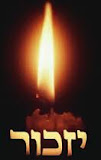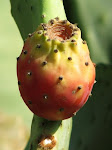I usually notice all those things that add positive value to our urban environment: a green corner with trees and bushes, a nice bench, an original trash bin, an interesting street mural, a splashing fountain, a gracious sculpture, an attractive sign or poster, a cute phone booth, an innovative bus stop etc...
(The top picture shows a fish sculpture facing the airport of Eilat).
Unfortunately, people with vandalistic tendencies notice them too and leave their ugly fingerprints upon them.
Eilat , for example, is a touristic resort ; things are being taken care by the municipality ,and if neccessary by the tourist police. Nevertheless, I found this (see picture below) in the very center of the city. I suppose it used to be a lovely sculpture of a man holding a round trash bin in his arms. The trash bin is there and still very useful, but the head of the man holding it is disfigured.
trash bin (Eilat city)
Near it, there's a standing painting of two chasidic dancers. (Chassidim are orthodox jews who're loyal to a prticular rabbi). It inspires joy and optimism and puts a smile on our lips. I'm glad vandalism hasn't touched it (yet).
painting- chasidic dance (Eilat city)
menorah (Eilat city center)
Since the introduction of cellphones in our life, there are fewer and fewer public phones; and yet, each little or big town has them, located in central, strategic places - major streets, commercial centers, hospitals, hotels, schools, train/bus stations, airports.
Besides being useful to the public they also look cute, until ...vandalism reaches them.
public phones on commercial street (Ramat-Gan city)
public phone- graffity and scratches (Ramat-Gan city)
public phone near hotel (Mizpe Ramon city)
Vandalism hurts us people because it damages and even destroys things we need and care about; it also costs us tax money to get them fixed. The trouble is that punishment for acts of vandalism is not serious enough.





















































